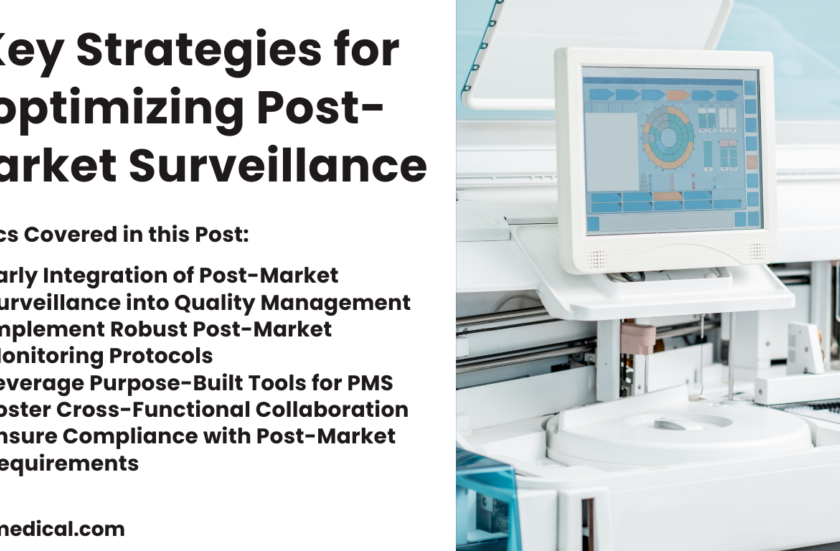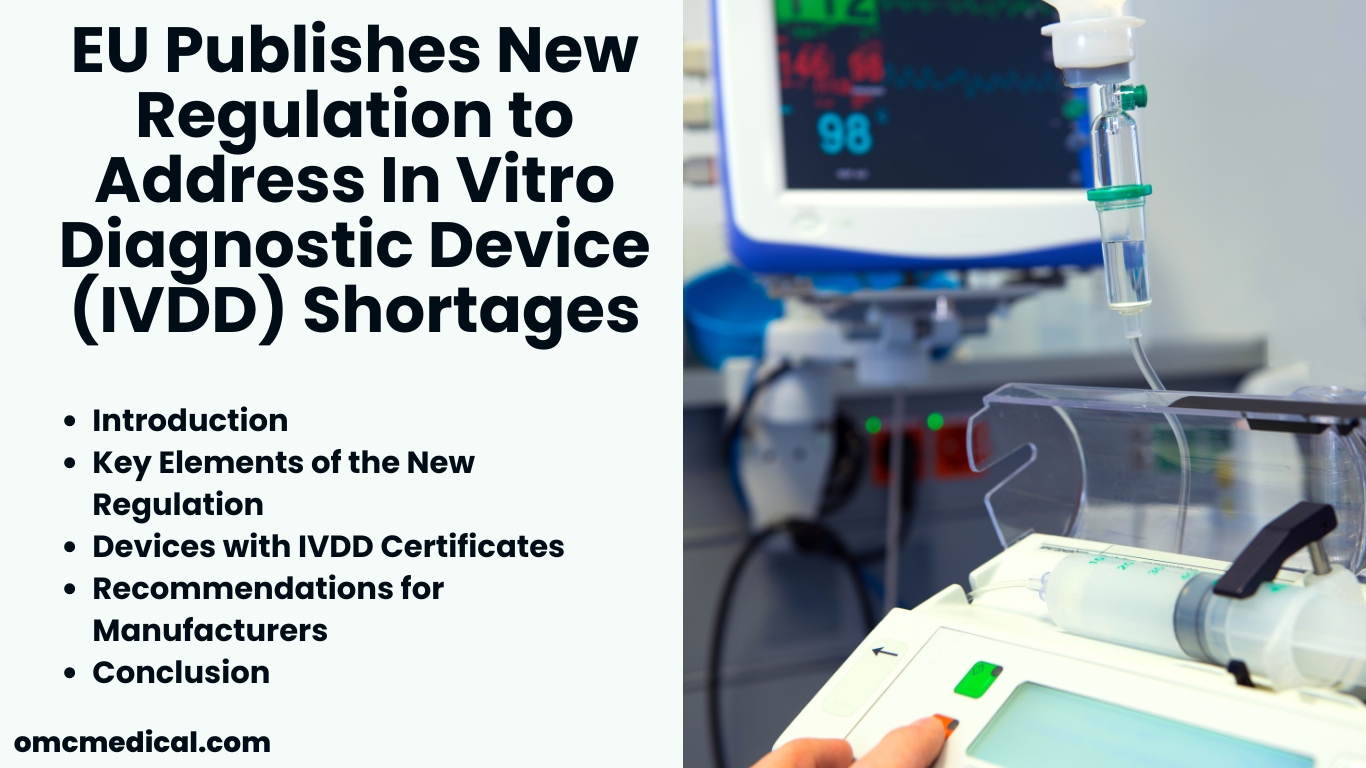As medical device manufacturers navigate the landscape of post-market surveillance (PMS) under the European Medical Device Regulation (EU MDR), maintaining vigilance and adherence to best practices is crucial. Effective PMS not only ensures ongoing product safety and efficacy but also facilitates compliance with regulatory requirements.
Top 7 Key Strategies for optimizing Post-Market Surveillance
Here, we outline key strategies for optimizing post-market surveillance in alignment with EU MDR standards.
1. Early Integration of Post-Market Surveillance into Quality Management
Integrate post-market surveillance activities into your quality management system (QMS) from the outset of product development. By incorporating PMS processes early, you establish a solid foundation for ongoing monitoring and compliance with EU MDR requirements.
This proactive approach mitigates risks and facilitates timely identification and resolution of issues in the post-market phase.
2. Implement Robust Post-Market Monitoring Protocols
Establish comprehensive post-market monitoring protocols to systematically collect, analyze, and respond to data related to device performance, adverse events, and customer feedback.
Regularly review and update these protocols to align with evolving regulatory guidelines and industry best practices. By conducting thorough post-market monitoring, you demonstrate a commitment to patient safety and regulatory compliance.
3. Leverage Purpose-Built Tools for PMS
Utilize specialized software solutions designed for medical device surveillance and post-market monitoring. These tools offer features such as complaint handling, nonconformance management, and CAPA processes tailored to EU MDR requirements.
By leveraging purpose-built tools, you streamline PMS workflows, enhance data accuracy, and ensure compliance with regulatory standards.
4. Foster Cross-Functional Collaboration
Promote cross-functional collaboration and communication across departments involved in post-market surveillance, including regulatory affairs, quality assurance, and product development.
Establish clear channels for reporting and escalating issues, facilitating timely decision-making and corrective actions. By fostering a collaborative culture, you enhance transparency and accountability in PMS activities.
5. Ensure Compliance with Post-Market Requirements
Stay informed and up-to-date on the latest post-market requirements outlined in EU MDR legislation. Regularly review guidance documents and regulatory updates issued by competent authorities to ensure compliance with reporting obligations, vigilance requirements, and post-market clinical follow-up (PMCF) obligations.
By maintaining compliance with post-market requirements, you mitigate regulatory risks and uphold patient safety standards.
6. Enhance Data Traceability and Documentation
Maintain comprehensive traceability of post-market surveillance activities through robust documentation and data management practices. Implement systems for documenting complaints, adverse events, corrective actions, and other PMS-related information in accordance with EU MDR documentation requirements.
By enhancing data traceability, you facilitate regulatory inspections and demonstrate compliance with post-market obligations.
7. Embrace Continuous Improvement
Embrace a culture of continuous improvement in post-market surveillance processes, leveraging data-driven insights to drive enhancements and optimizations.
Regularly assess the effectiveness of PMS activities, identify areas for improvement, and implement corrective measures as needed. By prioritizing continuous improvement, you demonstrate a commitment to excellence in post-market surveillance and patient safety.
In conclusion, staying vigilant in post-market surveillance under EU MDR requires proactive planning, robust monitoring protocols, and a commitment to compliance with regulatory requirements.
By integrating PMS into quality management systems, leveraging purpose-built tools, fostering cross-functional collaboration, and embracing continuous improvement, medical device manufacturers can navigate the complexities of post-market surveillance with confidence and ensure ongoing regulatory compliance.











